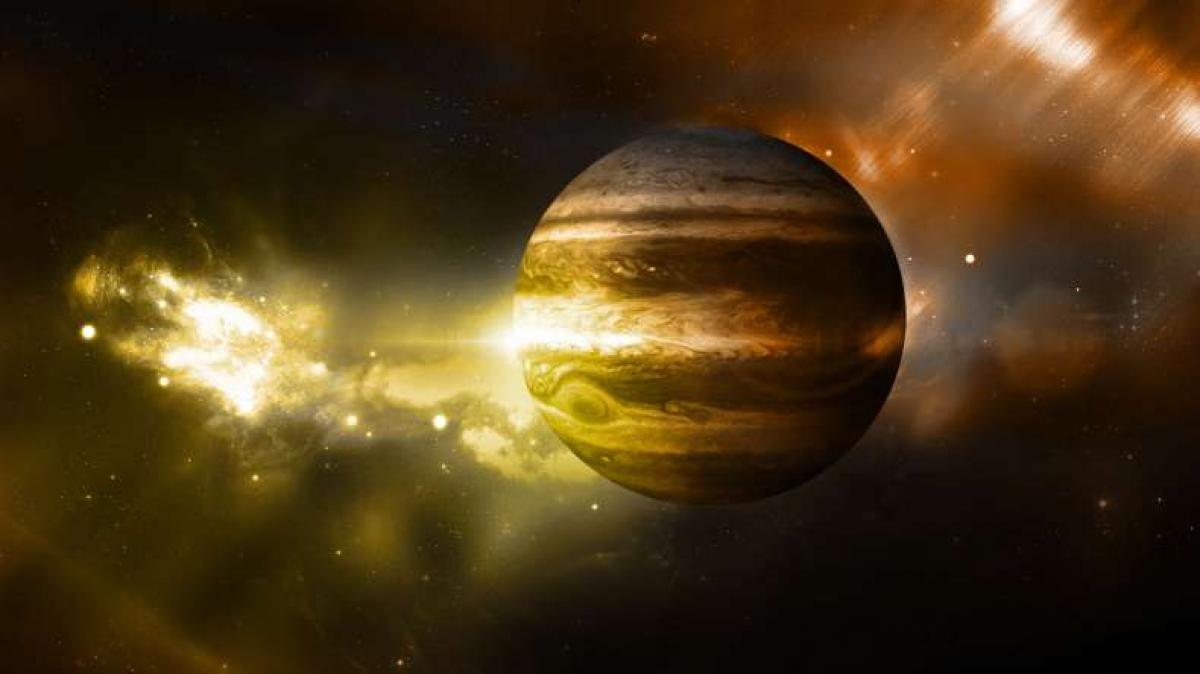Live
- PM Surya Ghar scheme set to surpass a decade’s installation growth in a year
- Centre should probe Soros-Gandhis nexus
- Student held, released after counselling
- Thousands witness Sagara Harathi
- Devotees participate in Kalasa Jyothi procession
- Music is My Language of Storytelling: Ajay Arasada
- Heavy Rainfall Forecasted in Andhra Pradesh and Telangana Due to Low Pressure Area
- Fierce battle ahead: Kejriwal faces off against sons of former CMs in New Delhi Assembly seat
- Police Attempt to Seize Mohan Babu’s Gun in TV9 Reporter Attack Case
- A feminist lens on our mythology
Just In
Indian American student in team that discovers Jupiter-like planet

14 Aug 2015 6:06 PM IST

x
Highlights
An international team of astronomers, including an Indian-American PhD student, has discovered a Jupiter like exoplanet outside earth\'s solar system just a 100 light years away.
An international team of astronomers, including an Indian-American PhD student, has discovered a Jupiter like exoplanet outside earth's solar system just a 100 light years away.
.jpg)
Researchers including Rahul I. Patel, a PhD student in Physics & Astronomy Department of Stony Brook University, New York, are calling the exoplanet a "young Jupiter" because it shares many characteristics of Jupiter.
A paper outlining the full findings is published in Science.
The finding could serve as a decoder ring for astronomers to understand how planets formed around the sun as it provides an opportunity to look at younger star systems in the earlier phase of development, according to a media release.
Called 51 Eridani b, the exoplanet is the 'faintest' one on record, and also shows the strongest methane signature ever detected on an alien planet, which should yield additional clues as to how the planet formed.
"We found that 51 Eridani is surrounded by warm dust that indicates the presence of an asteroid belt," said Patel.
"Finding dust around a star is like seeing a large signpost that tells us there might be a planet," he added.
"This is because the dust is usually created when lots of large asteroids collide and destroy each other, usually pushed around by a large planet - like 51 Eridani b."
Patel led NASA's Wide-field Infrared Survey Explorer (WISE) to search for any thermal glow that dust and ice grains resulting from collisions among asteroids and comets in the Solar System can produce.
His previous work identifying recycled planetary dust, known as "debris disks," around close to a hundred other star systems, puts the discovery of the exoplanet in context.
In addition to being the faintest planet ever imaged, it's also the coldest - 400 Celsius, whereas others are around 700 °C - and features the strongest atmospheric methane signal on record.
Previous Jupiter-like exoplanets have shown only faint traces of methane, far different from the heavy methane atmospheres of the gas giants in our solar system.
All of these characteristics, the researchers say, point to a planet that is very much what models suggest Jupiter was like in its infancy.
Patel and Stanimir Metchev, a Physics & Astronomy Professor at Western University in Canada and at Stony Brook University, are co-investigators on the scientific study.
They are both members of the international Gemini Planet Imager Exoplanet Survey (GPIES) team, which is dedicated to imaging and characterising exoplanets, planets discovered outside of earth's solar system.
"What makes 51 Eridani particularly interesting is that it also harbours dust and ice in the planetary system," explained Metchev.
"These are much like the dust and the ice grains produced by collisions among asteroids and comets in the Solar System."
More data from the European Space Agency's Herschel Space Observatory reveal that 51 Eridani is also surrounded by a more distant and colder cometary belt, much like the Kuiper Belt of comets beyond Neptune in the Solar System."
The two belts - the asteroid and the cometary belt around 51 Eridani - fall on either side of the newly discovered planet 51 Eridani b.
"The overall structure bears striking resemblance to our own Solar System, with Jupiter as the most massive planet orbiting between a belt of asteroids and a belt of comets," explained Metchev.
"In 51 Eridani, we are therefore seeing what the Solar System resembled at a very young age, around the time when the Earth was still forming."
By Arun Kumar
(Arun Kumar can be contacted at [email protected])

Next Story
More Stories
ADVERTISEMENT
© 2024 Hyderabad Media House Limited/The Hans India. All rights reserved. Powered by hocalwire.com






